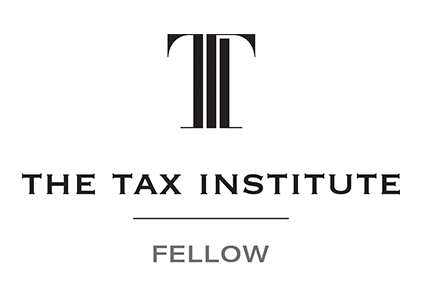
Trusts can be a very handy tool for managing one’s financial affairs, as well as estate planning. A trust is established whenever there is a separation of the legal ownership (for example, the name appearing on a business register or land title) from the beneficial owner of an asset (in other words, the person that a court would deem to be the true owner).
Legislation specifies the rules by which trust income should be calculated for tax purposes and how that income should be taxed — that is, whether in the hands of the trust or the beneficiaries. Therefore trusts, if set up in the right way, can help you legally minimise some tax liabilities.
But a family trust is a special version of such entities, and cannot simply be established as other trusts, but must “elect” to be a family trust. It is not sufficient to simply include the words “family trust” in the name. A trustee only makes a valid family trust election where they have satisfied the relevant tests, and made an election in writing in the approved form.
The upside
Being a family trust has specific taxation concessions, as electing to be a family trust restricts and specifies the trust beneficiaries, which in turn can secure or simplify the claiming of tax losses, debt deductions, franking credits and negate certain trust beneficiary reporting rules.
There are five key concessions available through a family trust election (FTE):
- The trust loss measures – a non-fixed trust has a carried forward tax loss, or certain debt deductions, but the trust could not satisfy the required trust loss tests to recoup the loss. By becoming a family trust, the trust is subject to concessional treatment and only one of the trust loss tests – the income injection test – applies, and only in a modified way.
- A company loss tracing concession – the company loss provisions allow a company that has a non-fixed trust as a shareholder to benefit from a tracing concession where that non-fixed trust is a family trust. Broadly, the tracing concession applies so that where the relevant interests in a company are held by the trustee of a family trust, a single notional entity that is a person will be taken to own the interests. This means that there is no need to trace past the family trust.
- The holding period rules regulating access to franking credits – the holding period rules allow the trustee and beneficiaries of a family trust that receives a franked dividend or franked non-share dividend to benefit from a franking credit concession. Broadly, unless the trustee of a non-fixed trust has elected for it to be a family trust, a beneficiary of the trust who does not have a vested and indefeasible interest in so much of the capital of the trust as is comprised by the shares giving rise to the dividends will not be a “qualified person” for the purposes of the holding period rule. Someone who is not a “qualified person” is denied the benefit of the franking credits attached to dividends paid on shares, or interests in shares, acquired by trusts (other than widely held public share-trading trusts).
- Trustee beneficiary reporting (TBR) rules – generally, these rules require the trustee of a closely held trust to advise the ATO of certain details. These are details about each trustee beneficiary that is presently entitled to a share of a tax preferred amount of the trust, or has included in its assessable income a share of the net income of the trust comprising an “untaxed part”. This advice must be provided by the due date for lodgment of the closely held trust’s tax return. Trusts that have made an FTE or an interposed entity election (IEE) (among others) are excluded from having to comply with the TBR rules.
- Small business restructure roll-over – from 1 July 2016 small business entities can restructure their business including by moving assets into, or out of, a trust, company, partnership, or a combination, without adverse capital gains tax consequences. There are requirements that must be met in order to access the rollover. One of these is that there is no material change in the ultimate economic ownership of an asset. Special rules apply in this context to discretionary trusts that have made FTEs.
Eligibility and conditions
Family trust elections can be made at any time, provided that from the beginning of the specified income year until June 30 of the income year immediately preceding that in which the election is made:
- the entity passes the family control test, and
- any conferrals of present entitlement or any actual distributions have been made within the designated family group.
The family control test looks at who can control the application of income or capital of the trust, which should include some or all of:
- the individual specified in the family trust election (also referred to as the “test individual”)
- members of the specified individual’s “family group” (which is defined)
- a professional legal or financial adviser to that family group.
While any kind of trust can elect to be a family trust, the need to pass the family control test restricts the choice to a trust that is not widely held and where a specific family effectively controls the trust.
The election does not have to be made on an approved form, however use of the form published by the ATO (which is updated annually) can help to ensure that all the relevant information for a valid election is provided. The NAT number for this form is NAT 2787-6.2018 (the last four digits on this refer to the year, so changing these to match the relevant year will get you the required form).
An election is only required to be made once, but the trustee is required to include the income year specified in the family trust election on the trust tax return each year while the election remains in force.
The downside
A family trust may be less flexible as a result of making an election, and it is also potentially exposed to another tax, the family trust distribution tax.
Family trust distribution tax is applicable when a distribution is made outside the family group (which is designated by making the election). Therefore making a family trust election is an important step for the trustee to take. Note that the term “distribution” has an expanded meaning for the purposes of family trusts, and includes both income and capital.
Note that a reasonable salary, wage or other benefit (such as superannuation contributions or fringe benefits) provided to, or for the benefit of, an employee for work performed is not considered to be a distribution.
The rate of family trust distribution tax is set at the top marginal rate plus Medicare levy.
A separate payment advice is required for each distribution of income or capital which attracts a family trust distribution tax liability, and remittance of the tax to the ATO is required to be accompanied by a Family trust distribution tax payment advice form.
Payment is generally required within 21 days after the distribution is made, or if the distribution was made before an election form was lodged, 21 days after the election.
Tax Store Accountants Warwick.
Tax & Super Australia: The special place for family trusts
Our Management Credentials





